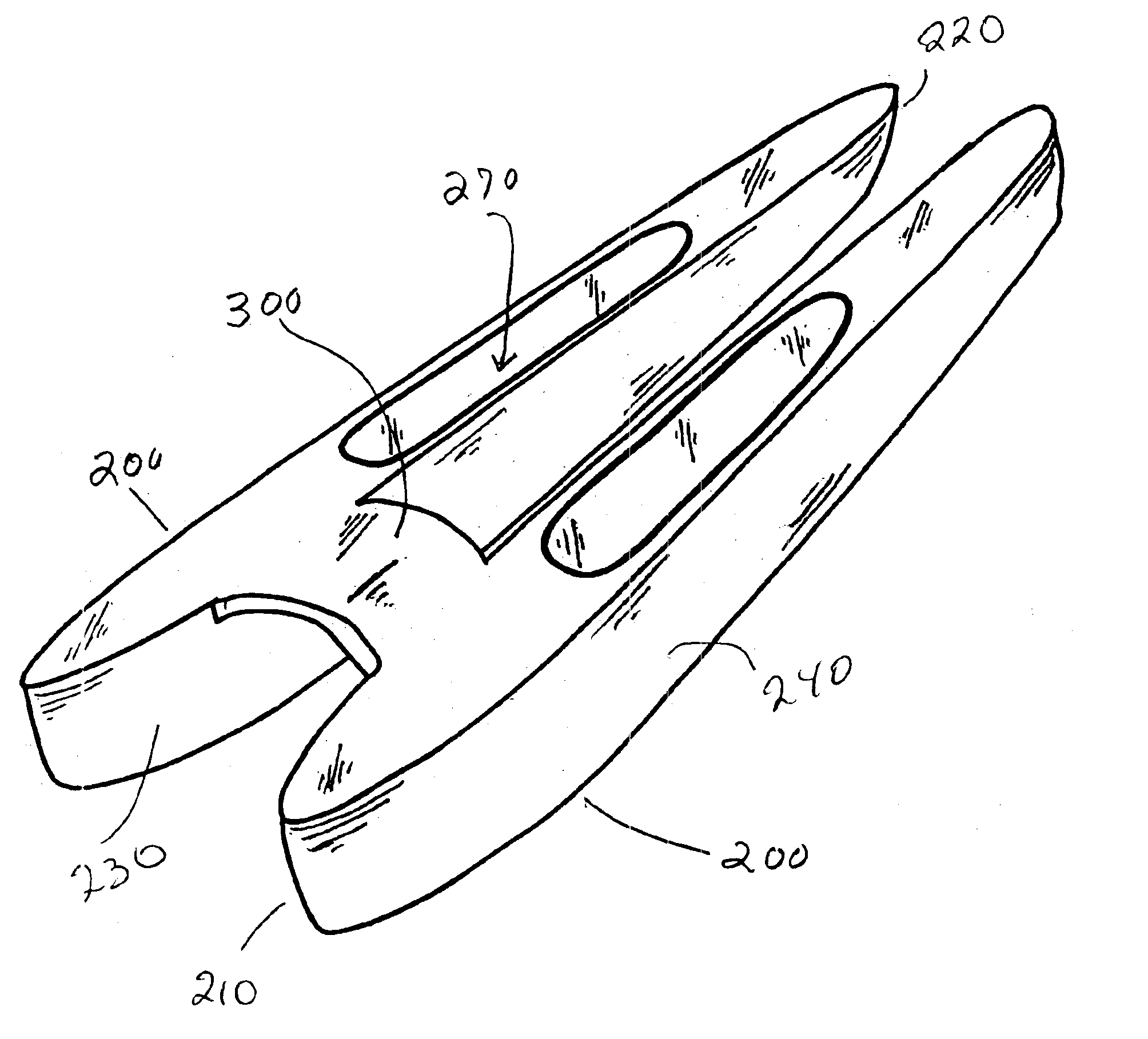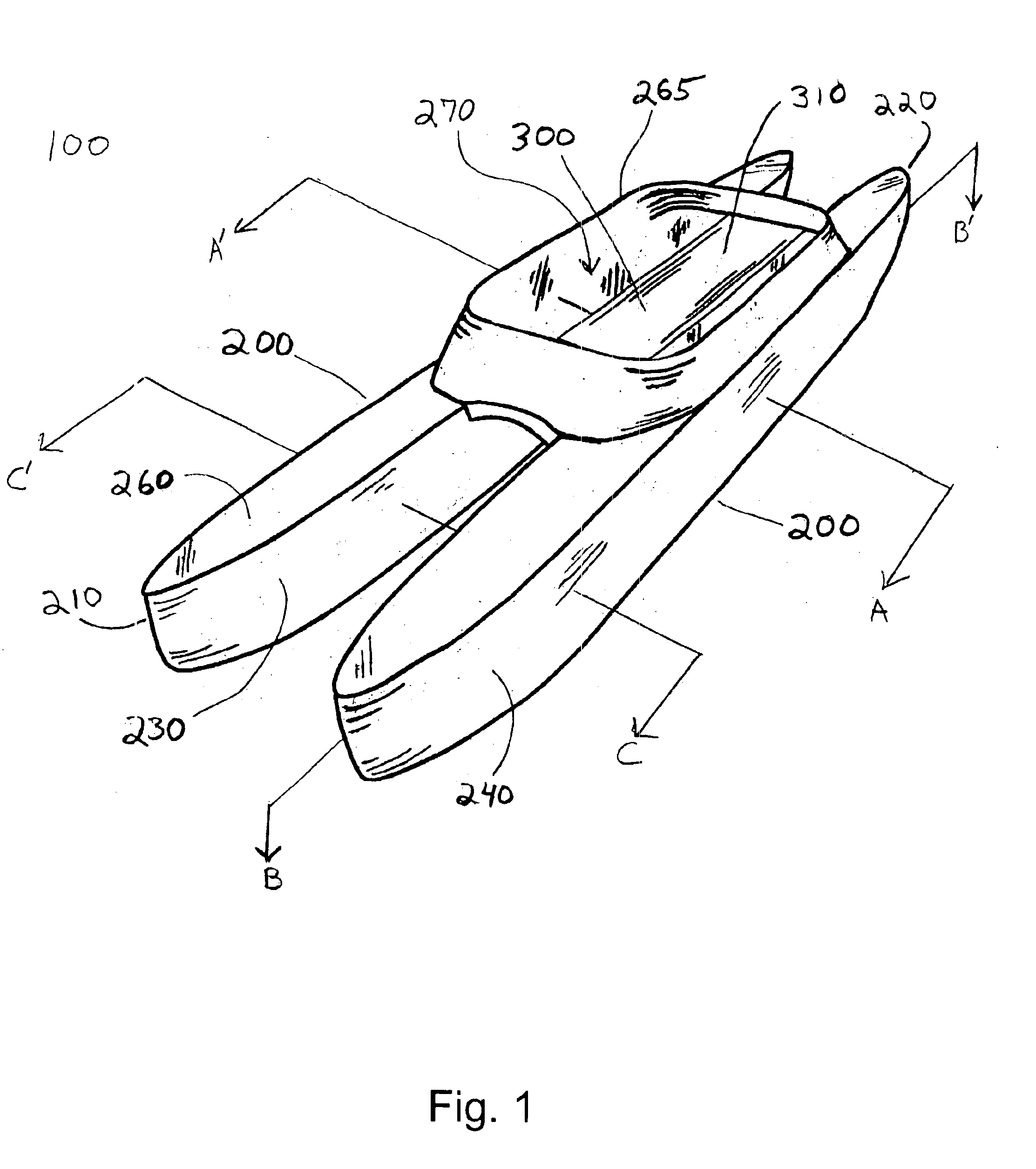Twin hull personal watercraft
- Summary
- Abstract
- Description
- Claims
- Application Information
AI Technical Summary
Benefits of technology
Problems solved by technology
Method used
Image
Examples
Embodiment Construction
As used herein, the term “hull” refers to a buoyant object that has a cavity. Each hull may have one large cavity or the cavity may be divided into a number of smaller compartments for convenience of use.
The hull may be covered (i.e., have a top surface) through which the cavity is partially accessible or it may have no top surface and only have a bottom surface and sides. In embodiments where the hull has no top surface, the “top of the hull” refers to the highest point on a side of the hull.
The invention provides a human powered, twin hull personal watercraft. As illustrated in FIG. 1, the watercraft 100 comprises two generally elongated hulls 200 rigidly connected by one or more connectors 300. A user can operate the watercraft with one foot and leg in each hull or with both feet and legs in one hull.
Each hull 200 further has an inwardly facing side 230 and an outwardly facing side 240. The connector 300 is rigidly attached to the inwardly facing side 230 of each hull 200.
The con...
PUM
 Login to View More
Login to View More Abstract
Description
Claims
Application Information
 Login to View More
Login to View More - R&D
- Intellectual Property
- Life Sciences
- Materials
- Tech Scout
- Unparalleled Data Quality
- Higher Quality Content
- 60% Fewer Hallucinations
Browse by: Latest US Patents, China's latest patents, Technical Efficacy Thesaurus, Application Domain, Technology Topic, Popular Technical Reports.
© 2025 PatSnap. All rights reserved.Legal|Privacy policy|Modern Slavery Act Transparency Statement|Sitemap|About US| Contact US: help@patsnap.com



